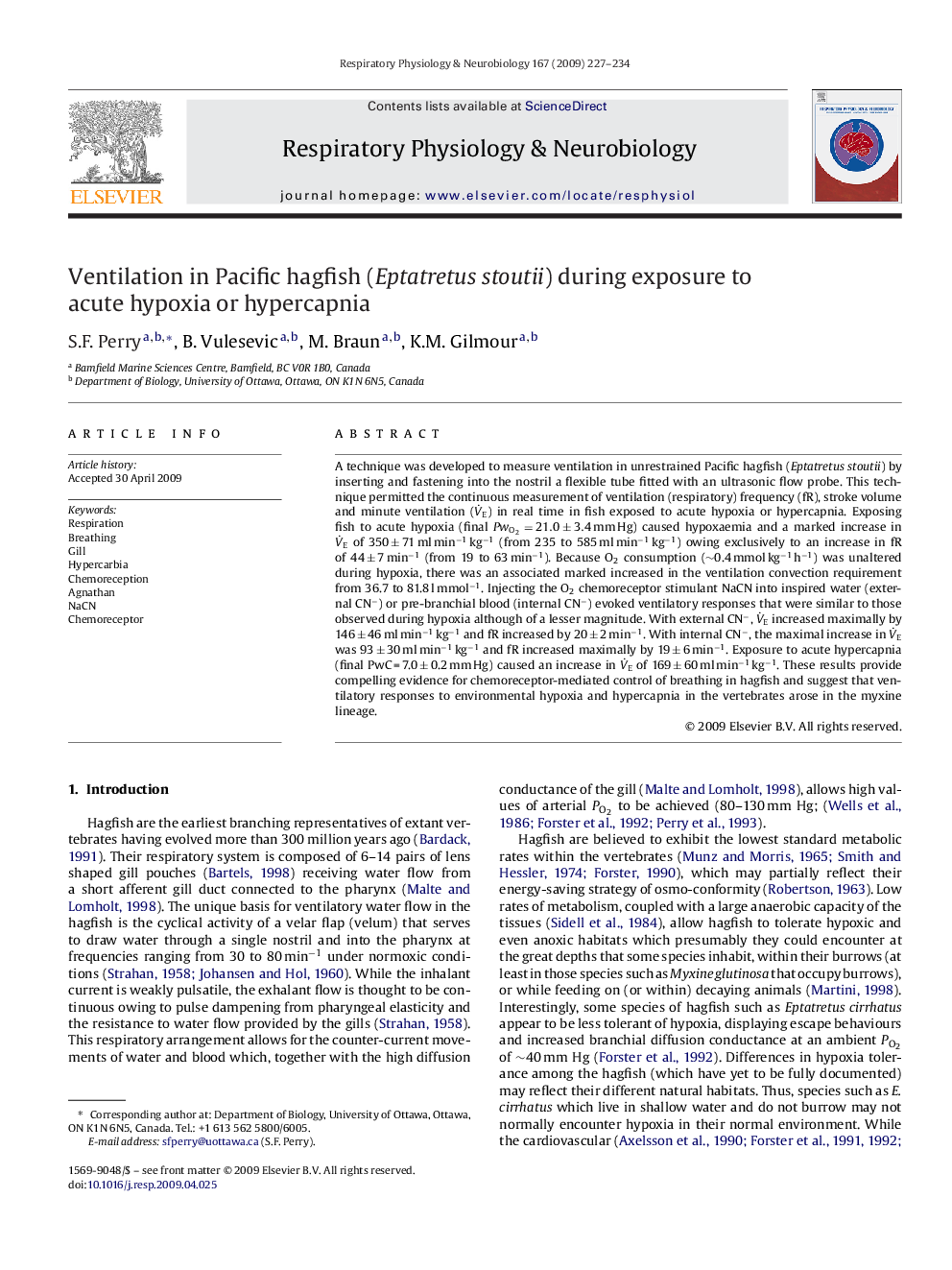| Article ID | Journal | Published Year | Pages | File Type |
|---|---|---|---|---|
| 2847890 | Respiratory Physiology & Neurobiology | 2009 | 8 Pages |
A technique was developed to measure ventilation in unrestrained Pacific hagfish (Eptatretus stoutii ) by inserting and fastening into the nostril a flexible tube fitted with an ultrasonic flow probe. This technique permitted the continuous measurement of ventilation (respiratory) frequency (fR), stroke volume and minute ventilation (V˙E) in real time in fish exposed to acute hypoxia or hypercapnia. Exposing fish to acute hypoxia (final PwO2=21.0±3.4 mm HgPwO2=21.0±3.4 mm Hg) caused hypoxaemia and a marked increase in V˙E of 350 ± 71 ml min−1 kg−1 (from 235 to 585 ml min−1 kg−1) owing exclusively to an increase in fR of 44 ± 7 min−1 (from 19 to 63 min−1). Because O2 consumption (∼0.4 mmol kg−1 h−1) was unaltered during hypoxia, there was an associated marked increased in the ventilation convection requirement from 36.7 to 81.8 l mmol−1. Injecting the O2 chemoreceptor stimulant NaCN into inspired water (external CN−) or pre-branchial blood (internal CN−) evoked ventilatory responses that were similar to those observed during hypoxia although of a lesser magnitude. With external CN−, V˙E increased maximally by 146 ± 46 ml min−1 kg−1 and fR increased by 20 ± 2 min−1. With internal CN−, the maximal increase in V˙E was 93 ± 30 ml min−1 kg−1 and fR increased maximally by 19 ± 6 min−1. Exposure to acute hypercapnia (final PwC = 7.0 ± 0.2 mm Hg) caused an increase in V˙E of 169 ± 60 ml min−1 kg−1. These results provide compelling evidence for chemoreceptor-mediated control of breathing in hagfish and suggest that ventilatory responses to environmental hypoxia and hypercapnia in the vertebrates arose in the myxine lineage.
